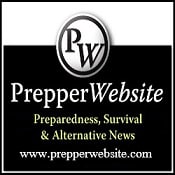Meal planning is beneficial for emergency preparation and as a part of your everyday life. Reducing the time spent deciding on “What’s for Dinner?” can give you hours of your life back and eliminate meal-time stress. Planning meals in advance makes purchasing and preparation predictable. It also provides the opportunity to increase the possibility of healthier diets and cost savings.
Any planning activity begins with establishing your desired state. Decide the scope of your plan. Do you want a plan for normal everyday life or a plan for emergencies? You could address both needs with a single plan or have a separate plan for each situation. To develop a plan, you will need to identify food preferences, special needs and constraints. Then define your planning horizon. A monthly plan can work well. A link to a planning template is provided at the end of this article. The meal plan is a guideline and may need to be adjusted as situations develop.
Balanced diet
Having a plan can help you to predetermine the portion sizes and content of your meals. You can take the time to deliberately select foods that will promote good health. This can reduce the situation where you just grab unhealthy choices for convenience. I was amazed by the impact of planning to eat food with health benefits. The results were quantified in my annual biometric screening.
Variety
Alternating the protein source is simple and easy, when you plan a week or month of meals. Using the template, see link below, you can fill in the boxes for each meal. One meal can be fish, the next beef and so on. I understand that there are health benefits to varying your foods.
Calorie count
Most people agree that monitoring the number of calories that you consume is a worthwhile effort. As you develop your meal plan, you may want to consider the calories for each item on the menu. Portion sizes can impact the calorie counts. Monitoring the calorie counts can be addressed after the initial meals have been added to the menu template.
Using long-term stored food a/k/a shelf-stable
If you are considering a meal plan that includes using foods that have been preserved for long-term storage, it may be beneficial to include those foods in your regular plan. These types of foods include: freeze-dried, dehydrated, and canned. In this context, canned includes foods that are “canned” in glass jars. Rotating these foods with your other, fresh foods can be beneficial to ensure that you can digest them. It also provides the opportunity to ensure that you can tolerate the tastes and texture of stored foods. If these foods are part of your emergency meal plans, it makes the transition (during an emergency) more comfortable when you are accustomed to them.
Constraints
It seems that there are more and more people who have food sensitivities or food allergies. Just as planning your meals provides you the opportunity target foods that provide health benefits, you can target foods to avoid.
If you are including emergency meal planning, you may want to consider the loss of power for foods that require a refrigerator. In this situation, you can include foods that use long-term storage methods in your meal plans.
Another emergency situation would be the interruption of power for cooking. Some long-term storage food is already cooked. Canned vegetables and meats are cooked in the can. Most canned soups can be eaten without being heated. Even freeze-dried food can be eaten without being heated.
Most people prefer to warm the food mentioned above. If that is your desire, having an alternative method for cooking is required. That is the topic for a different article, though. For meal planning, we need to know if heating food is a requirement.
In some situations, you will have minimal cooking utensils. If you intend to plan for that situation, it will affect your meal plan.
If an interruption of potable water is a situation that you want to include in your meal planning, determine the water requirement for your foods. Canned vegetable are packed in water, some meats too. Dehydrated fruits are sometime used as snacks, e.g., banana chips and strawberries. Water to rehydrate may be optional, for some foods, like beef jerky. Powdered soups and freeze-dried foods will need potable water for rehydration.
Another consideration when potable water is a constraint is cleaning the cooking and eating utensils. It is common practice for hikers to lick their eating utensils clean. Another option is disposable utensils.
Special needs
An important planning factor is accommodating special needs of the people included in your meal plan. Young children who are still cutting teeth will need soft foods. People with food sensitivities and allergies will need to be considered in the meal plan. Some people will need snacks to maintain glucose levels.
Purchasing performance
Planning your meals can be linked to the grocery store sales. Some of these sales are predictable. The prices for canned green beans are usually reduced near the holidays. They have a shelf life of several months. You may want to decide the number of cans that will support your meals for several months and purchase them at the reduced price. Some stores will have a cycle for reducing meat prices. When you understand the price reduction patterns, you can adjust your meal plan to parallel the sales.
At one grocery store, the roasts are on sale for buy one, get one half price about every 45 days. Another example is a national chain pharmacy reduces the price of canned salmon every other month. That information can save a lot on the grocery bill and help make meal plans cost efficient.
Menu planning template
The link below will take you to a menu planning template. A common technique for meal planning is to plan on a large meal on Sunday and use the leftovers for lunches through the week. A large roast can be spread over several meals. Weekday dinner leftovers can also be used for lunch throughout the week. In our house, we have a tradition of making a pizza on Friday evening. The leftovers cover two lunches during the following week.
If you need to plan for snacks, Menu Template is a MS Word document that can accommodate the addition of columns. If you need to add columns, you may want to change the document orientation to landscape.
 By Roger Eaton
By Roger Eaton
Over thirty years of experience in information technology and over seventeen years of experience in emergency services converged to inspire Eaton to develop Prep Smartz, emergency management software and Prep Smartz Academy.


